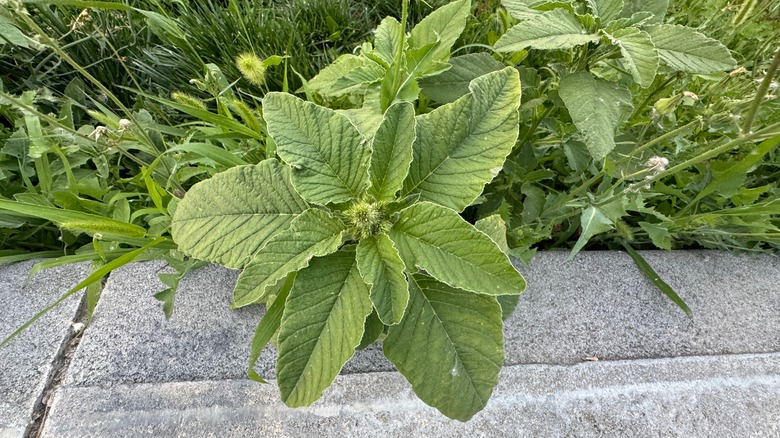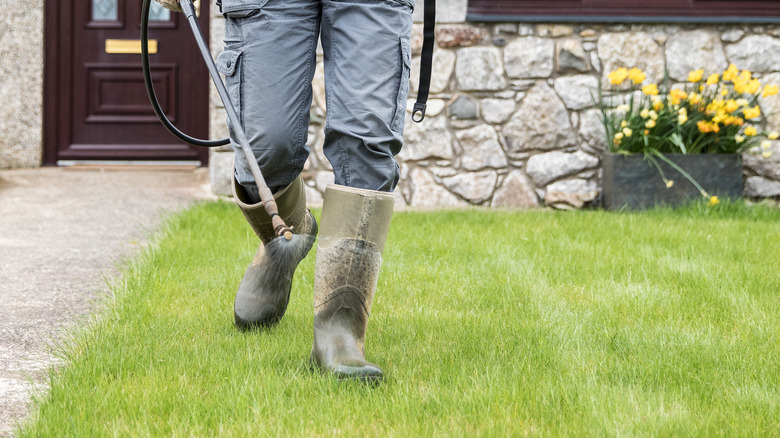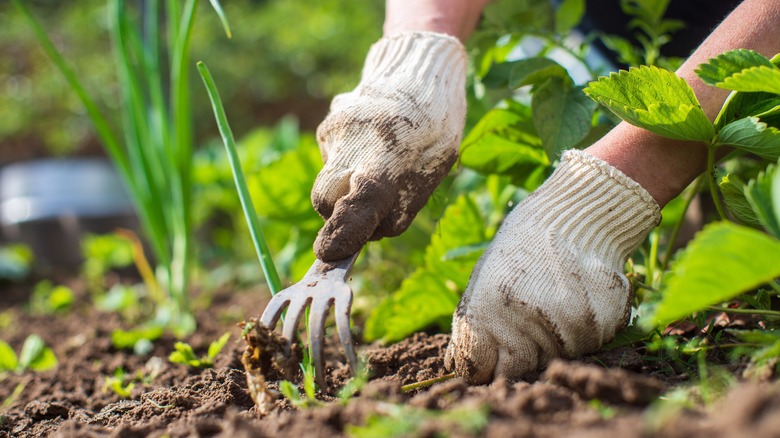Tips To Prevent And Kill Pigweed In Your Lawn
We may receive a commission on purchases made from links.
Pigweed might sound like the villain of a farm-themed fairy tale, but it's very real and can turn your lawn into a leafy battlefield. This pesky plant is a type of invasive weed that grows aggressively and competes with your beloved grass and garden plants for nutrients, light, and space. Gardeners and homeowners most commonly encounter the troublemakers known as spiny pigweed, redroot pigweed, and Palmer amaranth.
Why should you care about these weeds? Well, pigweed grows quickly, spreads like wildfire, and can be tough to eradicate once it takes root. If left unchecked, it can choke out the plants you actually want in your yard, making your meticulously maintained lawn look more like a jungle than an oasis. Luckily, there are several ways to show pigweed who's boss, ranging from preventative measures to hands-on removal tactics. Let's dig into some of the best strategies for kicking pigweed to the curb.
How do you prevent pigweed from growing?
One of the best ways to stop pigweed before it even starts is to use pre-emergent herbicides. Products containing the active ingredient trifluralin, such as the highly-rated Miracle-Gro Garden Weed Preventer, work wonders, and you can find any of these on Amazon or your local feed store, but you'll have to weigh the risks of using chemicals on or near your other plants. These herbicides prevent weed seeds from germinating, which means they never get a chance to sprout and spoil your lawn. Remember, always read the label carefully to ensure you're using the herbicide correctly and safely for your specific plants.
Mulch is another fantastic preventative tool that doesn't require chemicals sprayed all over your garden. Whether you prefer plastic mulch or pine straw, laying down a layer of mulch blocks sunlight from reaching weed seeds, effectively stopping them in their tracks. Not only does mulch keep weeds at bay, but it also helps retain soil moisture and regulate temperature—bonus!
How do you get rid of pigweed after it has sprouted?
Sometimes you have to get your hands dirty. One of the best ways to get rid of weeds such as pigweed is through hand removal. To be fair, doing so can take a lot of work, and it's best to pull the weed while the invader is young and hasn't developed a deep taproot, seeds, or spines. When dealing with mature plants, use thick gloves to protect your hands. For added safety, remove the pigweed from your garden and burn it. Some types can regrow if even a tiny piece of the root touches the ground.
If manual labor isn't your thing, post-emergent herbicides are here to save the day. These herbicides, like glyphosate (commonly sold as Roundup), kill the plant after it has sprouted and started to grow leaves. Be cautious when using glyphosate as there have been growing warnings about its health risks. For precision application, some people use a paintbrush or roller, or even a cotton glove over a latex glove to apply the herbicide directly to the pigweed.
Pigweed might be a formidable foe, but with the right strategies and a bit of persistence, you can reclaim your lawn and keep it looking pristine. Whether you decide to go for preventative measures like pre-emergent herbicides and mulch or go the hands-on route with hand removal and post-emergent herbicides, there's a solution for every gardener.


